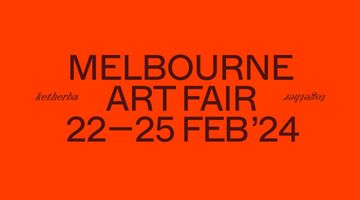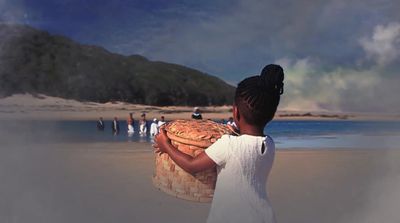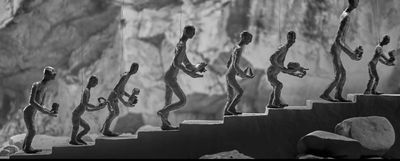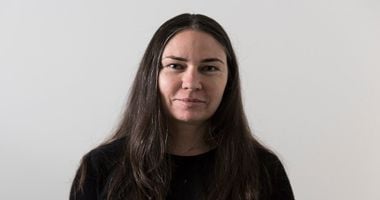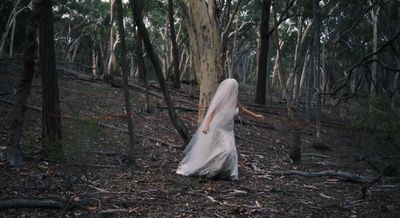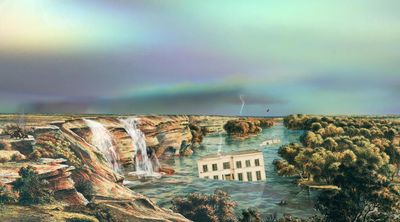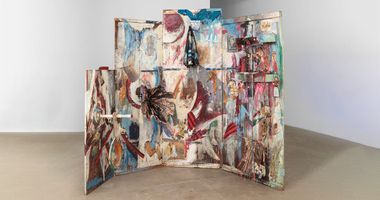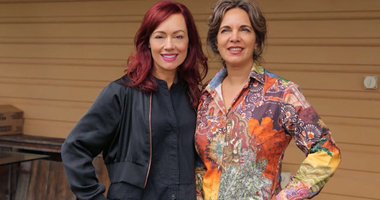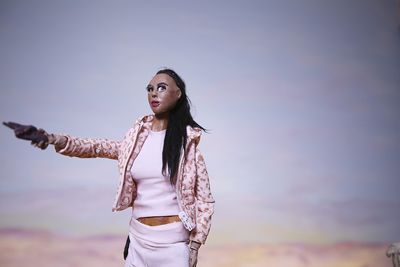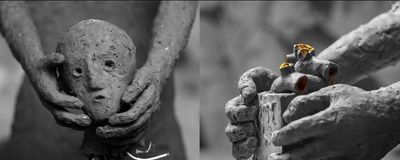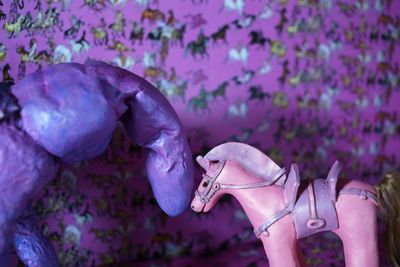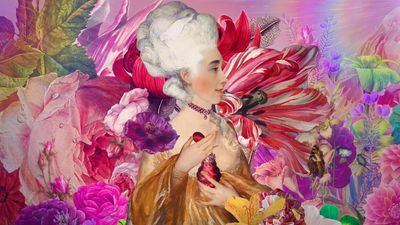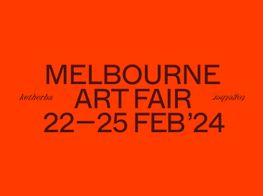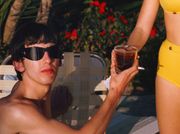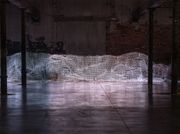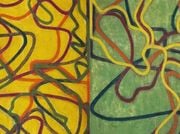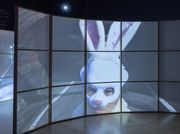Tamsin Hong on Togetherness and the Moving Image
IN COLLABORATION WITH MELBOURNE ART FAIR 2024
Tamsin Hong. Photo: © Mariya Andriichuk 2022.
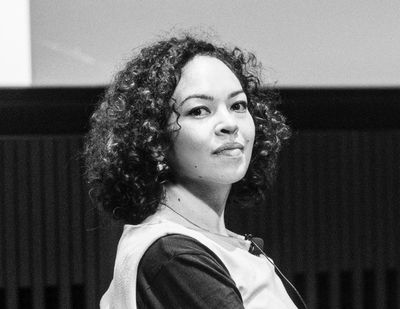
Tamsin Hong. Photo: © Mariya Andriichuk 2022.
Where does film and video belong in an art fair? Serpentine curator Tamsin Hong shares her vision behind a suite of moving image works showing at Melbourne Art Fair next month.
Tamsin Hong's interest in the moving image extends far beyond film and video media to the broader rubric of time-based art to which it belongs. Currently curator at the Serpentine and previously assistant curator for Tate Modern's performance programme, Hong is well-positioned to evaluate the place of ephemeral art in galleries and museums.
Next month, Hong is poised to push film and video—arguably the medium most emblematic of our highly mediated and screen-saturated age—to gain more sustained and committed attention in the art market. The Australian-born curator has programmed VIDEO, Melbourne Art Fair's dedicated sector for moving image inaugurated in 2022 and presented by VICE. As Hong aptly asserts, film and video 'defined some major shifts in art-making in the 20th century,' and 'collectors should be able to support those areas of the ecosystem'.
So what exactly can visitors to Melbourne Art Fair expect from the latest edition of VIDEO? Among the many things Hong wants to convey is the breadth of ideas and approaches employed by five artists working with the moving image. These include several forms of animation, various digital techniques, and a pair of live action works centred on performance, attesting to Hong's interest in the body as a site of ritual practice. Several thematic threads connect the selected works, including decolonisation, spirituality, and embodied experience.
For Hong, this year's theme ketherba—meaning 'together' or 'togetherness' in the language of the Boon Wurrung First Peoples—further animates ideas that have long been central to her curatorial practice.
In the following conversation, Hong speaks about her selected artists for the next edition of VIDEO and how their work reflects and refracts Melbourne Art Fair's theme for 2024; how her ethos as a curator from the Southern Hemisphere has been informed by working closely with First Nations artists and curators over the years; and the circuitous path that led her from initially pursuing a degree in international relations to her current role at Serpentine.
TMPrior to working in the U.K., you were in Australia and working a lot with First Nations artists. I'm curious about how that's informed your curatorial practice generally, and perhaps your approach to curating VIDEO at Melbourne Art Fair.
THWithout a doubt I'd be a different curator and person if I didn't grow up on Ngunnawal Country, in the bush outside Canberra. A lot of my learning and development is drawn from growing up in such an incredible environment, where you naturally become quite attuned to the landscape. People outside of Australia often think that everyone grows up in the bush, but those of us from the island continent know that it's quite an urbanised population. Most people live in a city or a big town. I was one of the few who didn't; I lived quite far out between Canberra and Goulburn.
While studying art history—which included studying British history—I developed an increasing discomfort about my presence in Australia, knowing that my ancestors had never sought permission to live there. My whole being has been profoundly influenced by my experience working alongside Aboriginal curators, and with Aboriginal and Torres Strait Islander material culture and artists, as well as the ancestors invoked (and are very much present in the practices of contemporary artists and custodians of culture). These experiences have taught me humility and to listen deeply. They have also helped me to cultivate my own agency within curatorial spaces and draw from my own cultural inheritance.
There are ongoing efforts to revive indigenous ancestral inheritances, material culture, and connections to land which exist across the globe. To cultivate and maintain these practices is quite extraordinary. That's also a part of Australia's cultural inheritance: being separated from the land, and the effects of class relations. This informs how I approach different practices and different artists and regions in the world. So understanding what it means to be on the other side of the globe, in the U.K., with the knowledge that there's so much that I don't know, is also really important. It feels like an evolving practice that will always be informed by my first 30 years in Australia.
I've also spent quite a lot of time in Aotearoa New Zealand because half of my family is based there. I've had proximity to two distinctive cultural histories and have witnessed incredible histories of resistance, continuation, and expression. There are many cultures that have arrived in both places since the 18th century. Having that comparative experience allows for curiosity and openness.
TMWhat were some formative steps in your journey to becoming a curator?
THIt was quite a convoluted career path. I started off studying international relations at the Australian National University, but it wasn't really the right fit for me. I accidentally formed a major in history as part of that degree. I noticed that most of my essays were based on material objects so I switched to a double major in history and art history, specialising in curatorship. I ended up writing my honours thesis on Carolee Schneemann—that's what drew me to performance art. It was a field I had long wanted to work in. I found it really exciting and invigorating because it pushed against the longer histories of object-based art, and it offered an incredible opportunity to explore embodied practices and ritual.
My whole being has been profoundly influenced by my experience working alongside Aboriginal curators . . .
After some travel and work in Europe, I moved to the U.K. post-2008 crash, which was a very difficult time. I managed to get some casual work at Tate in family learning. I'd previously worked in learning at the National Portrait Gallery in Canberra.
I returned to Canberra and worked as assistant curator in military heraldry and technology at the Australian War Memorial, where I enjoyed working on women's histories. In 2017, I moved back to the U.K. to do my masters and wrote a dissertation on Tracey Moffatt's presentation at the 57th Venice Biennale in 2017. Afterwards I had a job in a contemporary art gallery in Belfast, before landing the role of assistant curator (performance) at Tate where I worked for four years. In 2023 I was appointed exhibitions curator at Serpentine, which is an exciting international contemporary art gallery situated in the beautiful Kensington Gardens.
TMWhen did Melbourne Art Fair invite you to curate their 2024 edition, and how long has it taken to bring it all together?
THI first started conversations with the Melbourne Art Foundation in June last year, so I've had a few months to curate the content. This period coincided with Frieze here in London, which is such an important moment in the art calendar given all the activity that happens around it. That was a great moment to reflect on how the video content for Melbourne Art Fair would be received—from thinking about how different people would encounter it, to the importance of having that space—which lends itself much better to object-based art—reflect the diverse practices of contemporary artists. Having moving image as a focal point is a really great initiative.
TMHow did the fair arrive at the overarching theme of Ketherba and what kind of conversations are they looking for it to elicit?
THThe Melbourne Art Fair takes place on the land of the Wurundjeri and Boon Wurrung people of the Kulin Nation. One of the key things the Fair has been doing is work with the Kulin Nation. The word ketherba comes from the Boon Wurrung language and means 'together' or 'togetherness'. Boon Wurrung elder Carolyn Briggs granted the fair permission to use the word.
TMHow have you responded to that theme in the curated section, VIDEO?
THSome of the work I've curated very obviously resonates with this idea of togetherness. Buhlebezwe Siwani's Umntuntu (2018), for instance, is consistent with her work as a sangoma in which she practises as a healer and communicator with ancestors. She is a connector between ancestors and the living. Togetherness is infused in her work, and that's continued in her short film. Buhlebezwe is based in South Africa and will be visiting Melbourne for the fair.
There were two works that I was particularly moved by that use humour. It's an important part of togetherness, but it can also be quite divisive—humour can be used in a way that excludes. Rebecca Agnew's Infinite West (2022) is a feminist take on the spaghetti Western that uses humour to connect the audience to its content. Likewise, Joan Ross' Let's Party like it's 1815 (2022), a spoof of the early colonial activities in Australia, uses a similar technique. Both Agnew and Ross' works demonstrate an incredible level of animation skill.
The connection to the theme in Amala Groom's The Union (2019) is less obvious, but like Siwani, Groom speaks to the connection between ancestors, the living, and the land, and seeing these not as separate entities but as something holistic and integrated.
Geng Xue's The Name of Gold (2019) speaks to the connection between the subjects of the film, and the ways in which we think about our own labour. It touches on alienation and a lack of togetherness, and how vital it is to have community around you. There's something more subtle about that work. I think what was important overall was to show a range of works, and complicate the idea of togetherness in the selection.
TMCan you talk us through the process of putting this project together, and how you selected the artists and works?
THWe put a call out to galleries in Australia and internationally to share with us video works by artists they represent. To assist with the process and to acknowledge that the work will be available to view online, as well as in person, we requested single-channel works.
I viewed all of the works that were submitted, and whittled them down to a longlist before reviewing a final list. Some artists I was familiar with, but some were new to me. We're now at the stage of discussing with the galleries and the artists how we're going to show the work.
If we are not representing the full spectrum of artists' practices in art fairs, it means collectors are not able to support those practices.
The shortest work, Buhlebezwe's Umntuntu, is less than three minutes long, and the longest, Rebecca Agnew's Infinite West, is just over 17 minutes. So they're all quite short, but they all speak to the power of artist films and their ability to convey so much in a short period of time. I think as a curator, I'm very aware of the ways in which we hold attention in art fairs and public art galleries. It wasn't a conscious decision not to include feature-length works, although there weren't many submitted. While my selection was based on the strength of the work as opposed to duration, I do think it's really beneficial for video works to be viewed in full. In gallery and art fair settings, that can be quite difficult.
TMThe organisers of the 2022 edition of Melbourne Art Fair noted how 'durational and time-based media are often ill-served by art fairs'. What would you say is the place of moving image in an art fair, and what are the challenges of presenting it in this context?
THIf we are not representing the full spectrum of artists' practices in art fairs, it means collectors are not able to support those practices. And so it's really important to have time-based media, including live programming and video, to ensure collectors have access to a complex and comprehensive range of works that they can collect. Collectors should be able to support those areas of the ecosystem which have defined some major shifts in art-making in the 20th century, and are now ubiquitous in the 21st century.
TMWhat are you working on at the moment at Serpentine?
THI'm working on Yinka Shonibare CBE's solo exhibition, Suspended States, which will open at Serpentine South from 12 April to 1 September 2024. It's his first solo exhibition in London in over 20 years, which is extraordinary given he's such a visible artist and well-represented in galleries and museums.
The show will explore themes many of us are familiar with in Yinka's work, including the suspension of psychological, physical, and geographical boundaries. We're excited to show new works examining systems of power embodied in Western iconography, and the ongoing legacies of European imperialism—so very timely. It will coincide with Yinka's presentation at the 60th Venice Biennale from April 2024. He's presenting in both the Nigerian pavilion and in the curated section, so it's a very exciting year for Yinka! —[O]



